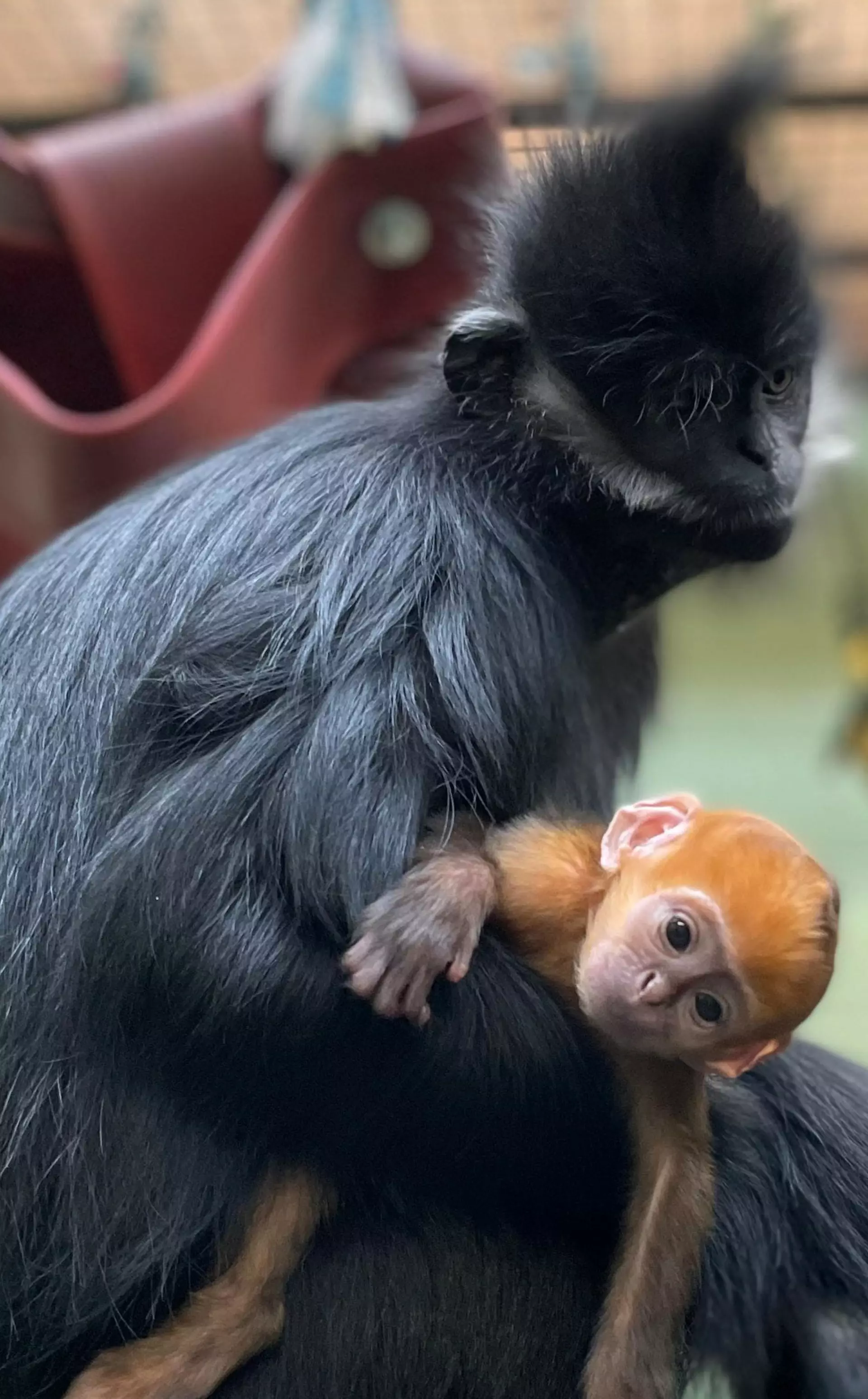Our Zookeepers share first pictures of one-week-old Endangered Francois' langur.
A little ‘ray of sunshine’ has been born at the Zoo. An endangered François’ langur was born to mum Lulu and dad Wang in the early hours of Saturday 17 February.
In contrast to the adult François’ langurs monochromatic coats, infants are born with shocking orange hair.
The flame-coloured monkey, which currently spends most of its time cuddling into Mum’s dark black hair, was born as part of a European Endangered Species Breeding Programme (EEP) - an internationally coordinated conservation initiative which aims to boost the numbers of species that are threatened in the wild.
Zookeeper Amanda Robinson said the team were ecstatic when they saw Lulu cradling her bright orange baby at the weekend.
Amanda explained: “It’s believed the babies are born with bright orange locks so that parents can easily spot the youngster when they’re being cared for by the troop.
“Over time this hair will fade to black. The bright orange hair certainly makes it easier for keepers and visitors to spot the new addition!”
François’ langurs (Trachypithecus francoisi) are listed as Endangered on the IUCN Red List of threatened species. Native to China and northern Vietnam, their numbers have continued to fall in the wild, making the birth internationally important.
Amanda added: “Sadly, in the wild the number of François’ langurs are plummeting, so this newborn really is a ray of sunshine and a sign of hope for the species.” she said.
At the François’ langurs habitat, big sister Nguyen has been keen to share parenting responsibilities with Mum and learn to look after a newborn baby.
Amanda said: “Nguyen has been staying close to her mum Lulu and giving her a break when she needs to eat or drink. She’s been treating the newborn like it’s her own baby, which is exactly what you’d see in the wild - it shows the eight-year-old has picked up great skills from the older members of the troop.”
Conservationists estimate there are only 2,000 of these primates left in the wild. The species faces threats from illegal hunting for their meat and for traditional medicinal purposes. Caring for a back-up population in zoos is vital to protecting their future.
Through ZSL we work across the world to tackle the illegal wildlife trade, including in Thailand - the largest transport point for the illegal wildlife trade in Southeast Asia. In April, ZSL signed a ground-breaking agreement with the Land Transport Federation of Thailand (LTFT) to help stop the illegal trade of threatened animals - including François’ langurs and other mammals, birds and reptiles, being taken from the wild.
Alongside monitoring activities along trade routes, ZSL experts work with the LTFT to increase environmental awareness among the 20,000 companies represented by their 10 member associations, encouraging the adoption of zero-tolerance to illegal wildlife trade practices across the country.
The langur troop can be found at Whipsnade Zoo’s brand-new Monkey Forest – which opens to the public on 29 March. Visitors will meet the mischievous monkeys as they journey through Monkey Forest, along with Sulawesi crested macaques, the curled-tusked Babirusa, and the ‘demons of the forest’, the lowland anoa along the way.
